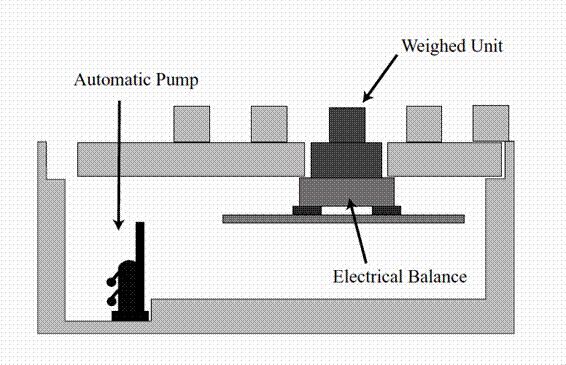| 1/50 Smaller scale model | |
| The 1/50 smaller scale model was newly built up next to the larger one
(Figures 1 and 2), although the concept basically followed our previous
model used in the validation of a simple urban energy balance model (Kanda
et al., 2005a). The model surface geometry consisted of cubic concrete
blocks 0.15 m on a side, regularly distributed on flat concrete plates
with a total area of 12 x 9 m2. The surface geometry was similar to and
the material was the same as those of the 1/5 model, except that the inside
cube was filled with concrete. To capture a sufficiently developed IBL,
all sensors were installed 11 m downstream from the fetch. The same instruments
of radiometer (Eiko MR-40), compact sonic anemometer (Kaijo TR90-AH), CO2/H2O
open-path analyzer (LI-COR LI-7500) were installed at the same heights
relative to cube (Z/H), as in the 1/5 model. A total of 72 eat plates,
each of which has 0.05 x 0.05 m2 area and 0.4-mm thickness (Captec HF-50)
and is carefully coated with the same material that the cubes are made
of, cover a unit of constituent surfaces . |
|
 Figure 1 Plane view of the scale model site. (1), (2) and (3) indicate the locations of tower of the north, center, and south, respectively. |
 Figure 2 1/50 smaller scale model |
| The latent heat flux from concrete blocks is expected to be too small
to be accurately measured by the EC method. Nevertheless, our filed measurements
(Moriwaki and Kanda, 2004) and our previous scale model experiments (Kanda
et al., 2005a) suggested significant evaporation from concrete materials.
Nocturnal urban dew would be another important hydrological process even
if it is quantitatively small (e.g., Richards, 2005). To accurately capture
these small amount of evaporation or condensation, an electric balance
was installed only for the 1/50 scale model (Figure 3). The electric balance sampled the weight change at every 10 sec. Although the raw data was largely fluctuated by wind, a moving average more than 30 minutes was found to successfully exclude the noise from preliminary test using a perfect non-permeable cube. The accuracy of latent heat flux of this system was estimated ±1 W m-2 both from the resolution of electric balance (0.01 g) and the results of preliminary test. |
|
 Figure 3 Cluster of heat plates on one model unit |
|